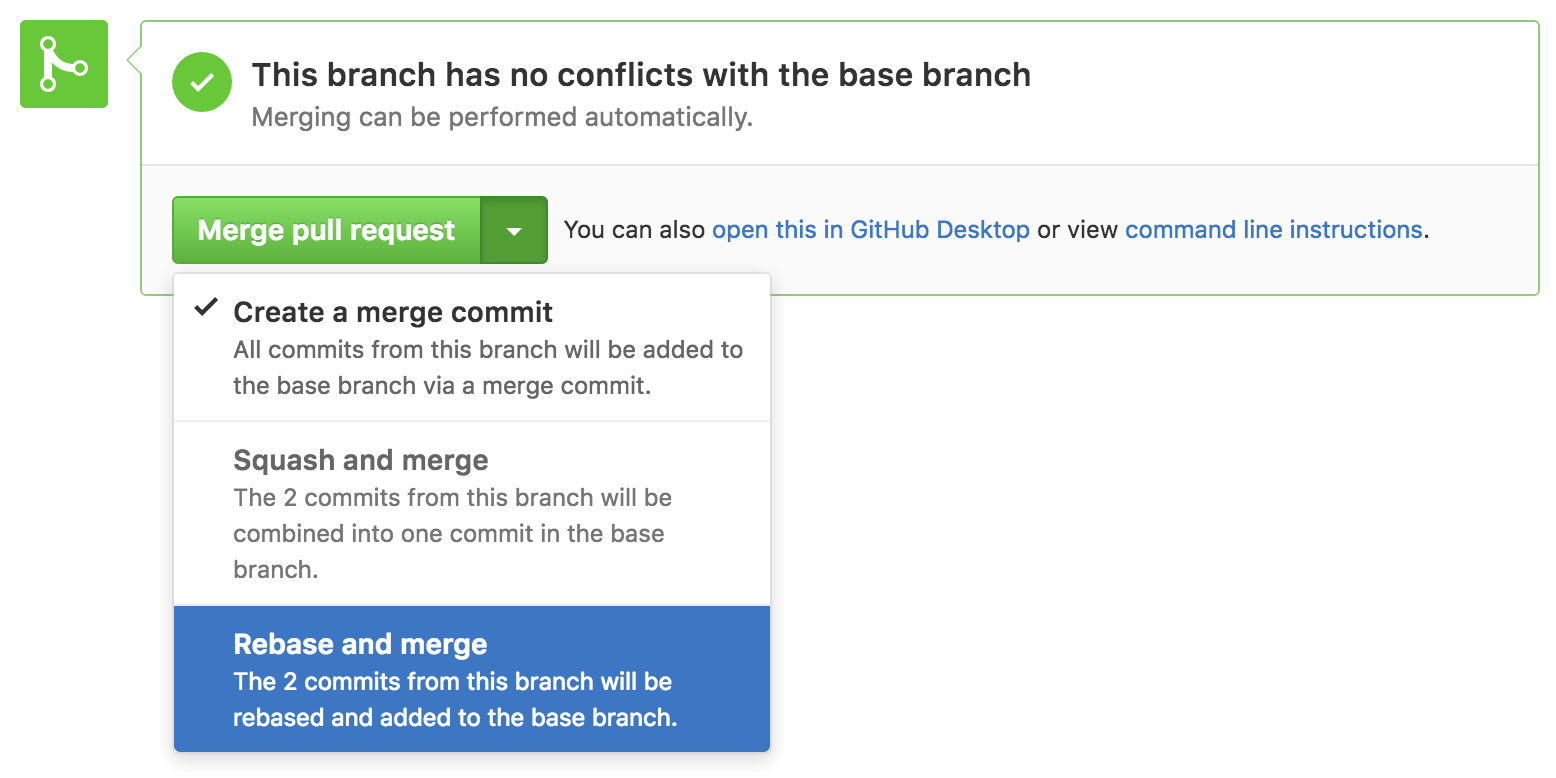Rebase and merge pull requests
The merge button on pull requests supports two great workflows with merge commits and commit squashing. Now you can use the merge button to rebase and merge your changes, too.…

The merge button on pull requests supports two great workflows
with merge commits and commit squashing.
Now you can use the merge button to rebase and merge your changes, too.
How does it work?
When you select the new “Rebase and merge” option,
the commits from the pull request’s branch are rebased on to the tip
of the base branch, and then the base branch itself is fast forwarded
to this newly rebased head. Rebases automatically set the committer of
the rebased commits to the current user, while keeping authorship
information intact.
The pull request’s branch will not be modified by this operation.
If a rebase can’t be performed due to conflicts, we’ll let you know so
you can manually resolve them as necessary.

As with “Squash and merge”, repository administrators can decide whether they
want to allow this new option on the repository settings page.
Learn more about rebase and merge in our Help docs.
Written by
Related posts

Why developer expertise matters more than ever in the age of AI
AI can help you code faster, but knowing why the code works—and sharpening your human-in-the-loop skills—is what makes you a great developer.

How to create issues and pull requests in record time on GitHub
Learn how to spin up a GitHub Issue, hand it to Copilot, and get a draft pull request in the same workflow you already know.

The difference between coding agent and agent mode in GitHub Copilot
We’ll decode these two tools—and show you how to use them both to work more efficiently.